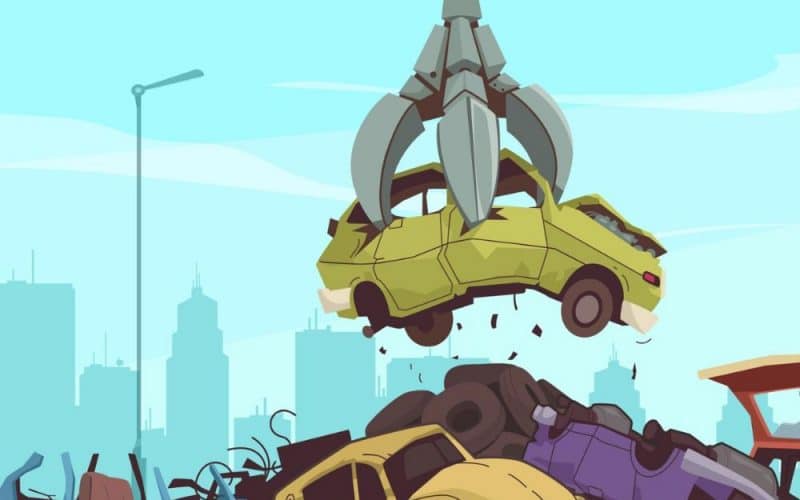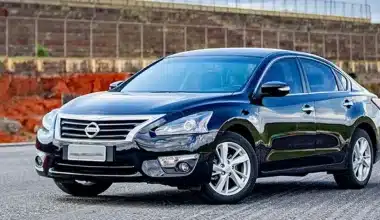A totaled car is when a car insurance company decides that the cost to repair your vehicle exceeds (or is close to exceeding) what your vehicle is worth. With more than 10 million car and light truck accidents occurring each year, you may have to deal with this at some point.
Depending on your state and whether you or another driver were at fault in the accident, the damage to your car may be covered either by your insurance policy or the other driver’s. If you file an insurance claim, your insurance company (and possibly the other driver’s) will assign a claims adjuster to your case. The adjuster’s job is to determine how much their company should pay out on the claim.
The adjuster may conclude that your car is totaled, or a total loss, if it isn’t worth repairing or isn’t repairable at all. Insurance companies have their own formulas for making that determination. If an insurer totals your car, you can receive payment for what the company deems the car is worth. This is minus your policy’s deductible.
That means if your car is worth $5,000 and you have a $500 deductible, the auto insurance company would pay you $4,500.
When is a car considered totaled?
When a vehicle is totaled, it means the insurance company believes it isn’t worth repairing. The insurer may replace your totaled car with an equivalent one or offer you a cash payment equal to your car’s value.
If you believe the insurer’s offer is too low, you can challenge it. Also, if you have a loan on the vehicle, you will still have to repay your lender in full. About half of the states use what is called the “total loss formula” (TLF). This is where the car is considered a total loss if the sum of the repair costs plus the salvage value of the car exceeds the car’s ACV.
The formula for determining whether a car is “totaled” varies by state. There are two common methods to determine a total loss:
- Total loss threshold. A car is declared a total loss when the cost of repair is more than the state’s set percentage of the car’s actual cash value (ACV). Most states that use a total loss formula set the percentage between 70% and 80%.
- Total loss formula (TLF). In states that don’t set a threshold, a car insurance company might use a formula like this: Cost of Repair + Salvage Value ≥ Actual Cash Value. If the cost of repair and salvage value is more than the ACV, a vehicle is declared a total loss.
Claims against the other driver will fall under their policy’s property damage liability coverage. If your policy is the one that will be paying for the damage to your car, either your collision coverage or comprehensive coverage—if you have any—will be involved.
Total loss claims and actual cash value
To get an insurance payout for a car that is a total loss, you must have either property damage liability (PD) or comprehensive or collision insurance in your policy. PD is mandatory in every state, but the only way to receive a payout from it is to file a claim against another driver’s PD. For you to get compensation, the other driver must have been negligent in the accident.
The easiest and surest way of getting payment for a total loss is through your own insurance company, which you can do through collision insurance. With collision claims, it does not matter whether you were at fault (you have to pay your deductible before the insurer will cover the claim though).
Assuming you have these types of coverage in place — and that you are not injured or busy seeking medical care — your first step after the damage occurs would be to file a claim with your insurer as you would for any accident. A claims adjuster will come to inspect the vehicle to assess the damage. It is here where the total loss designation will be made, if necessary.
If the adjuster determines that the cost to repair exceeds the actual cash value, or ACV, of the car, then it is considered a total loss. What constitutes a total loss is not always simple, and how it’s determined actually varies among states. Some states go by a “total loss threshold” (TLT), where damage only needs to exceed a certain percentage of the car’s value to be declared a total loss.
How does an insurance company determine the value of a totaled car?
Some states specify using NADA to determine a vehicle’s value. Other states determine a car’s value based on a current edition of a nationally recognized compilation of values, including databases.
The factors used to determine a totaled car’s value include:
- Make, model and year
- Mileage
- Pre-loss condition
- Sales price of similar cars in your area
- Salvage value (resale value of parts and metal)
Auto insurance for totaled cars
There are several optional auto insurance coverage types that help with a totaled car.
Collision and comprehensive insurance
Collision and comprehensive insurance are often sold together. They cover a wide range of problems that could potentially total your car. This includes car accidents, car theft, vandalism, floods, fire, severe weather, collisions with animals and falling objects (like a tree).
If your car is declared a total loss due to a problem covered by your collision or comprehensive insurance, you can file a claim with the insurance company. You’ll get a check for the settlement amount (minus your deductible). You can use this to purchase a new car.
If you have a car loan or lease, your lender or leasing company will likely require you to carry collision and comprehensive coverage.
Gap insurance
If your car is totaled due to a problem covered by your policy and you owe more on your car loan or lease than the settlement amount, gap insurance will cover the “gap” between the two.
To qualify for gap insurance you will need to have collision and comprehensive insurance. You can typically buy gap insurance from your car insurance company, car dealerships, banks and credit unions. Standalone policies are available from companies like Gap Direct.
How does gap insurance work?
You have a $25,000 loan but your car’s value was $22,000 when it was totaled. After your $500 deductible, you get a settlement check for $21,500. You still owe your lender $3,500. Gap insurance will cover this amount.
New car replacement insurance
New car replacement insurance pays for a new car of a similar make and model (minus your deductible) if your car is totaled in an accident covered by your policy. This is better than getting a check based on the value of the vehicle at the time it was totaled.
You’ll need to have collision and comprehensive insurance in order to qualify for new car replacement coverage. Your car must also meet the car insurance company’s age and mileage requirements. You typically cannot combine new car replacements with gap insurance.
Here’s an example of how new car replacement works. You purchase a new car for $30,000. After several months, your car depreciates to $26,000 in value and is totaled by a flood. New car replacement coverage will pay for a new car of a similar make and model, not the depreciated value of $26,000.
Rental reimbursement auto insurance
If your car is totaled by a problem covered by your policy, rental reimbursement insurance covers rental car bills or other forms of transportation, like subway and bus passes.
This type of coverage can only be added to your policy if you carry collision and comprehensive insurance. It can be valuable coverage to have considering the total loss process usually takes longer than your typical fender bender car insurance claim.
Uninsured motorist coverage
Uninsured motorist coverage can kick in if you don’t have collision insurance. In states where this coverage is available, you can use uninsured motorist property damage (UMPD) if an uninsured driver totals your car. (Or you can try to sue the other driver.)
However, UMPD may be insufficient because it will only pay up to the UMPD limit listed in your policy. For example, if your policy limit is $25,000 but your car’s value is $30,000, you’ll only get $25,000, leaving you $5,000 short. To avoid this problem, it’s a good idea to buy collision insurance if your car’s value exceeds your UMPD limit.
What happens if your car is totaled?
The insurance company will typically offer you a settlement amount based on the car’s value if your vehicle is totaled. If you’re making a claim on your own collision or comprehensive insurance, your deductible amount will be subtracted from your insurance check.
Here’s an example of how an insurance claim for a totaled car might work:
- You get into a car accident and file a claim under the collision insurance portion of your car insurance policy.
- A claims adjuster inspects the vehicle and deems it a total loss based on your state’s total loss method.
- Your insurance company makes a settlement offer based on your car’s value, minus your collision insurance deductible amount.
- If you have a loan/lease, a settlement check will go to your lender or leasing company for the balance.
- If you do not have a loan or lease, you will receive the settlement check.
How much does insurance pay for a totaled car?
A car insurance company pays what it estimates the vehicle was worth right before the accident and subtracts your car insurance deductible.
An insurer takes into account a vehicle’s make and model, and mileage. It also considers the sales price of similar cars in the area, the car’s pre-loss condition and its salvage value.
Let’s say that your vehicle was worth $10,000 when it was totaled. Here are two scenarios:
- You’re making a claim on your own collision or comprehensive insurance and you have a $500 deductible. The company will deduct your deductible from the $10,000 and pay you $9,500. If you financed your car, the lender gets the payment of a claim for what you owe on the vehicle.
- Someone else was at fault for the accident and you’re making a claim against them. Their insurance company will pay you $10,000. When you make a claim against someone else’s insurance there is no deductible.
How are you paid for a total loss?
The amount you’ll be compensated for a total loss is the ACV, which is the same metric used to determine if the car is a total loss. The ACV of the car is determined by its pre-loss market value, less depreciation from when it was new. Ultimately, the ACV of your car will be determined by its wear and tear and age, along with other factors your insurer deems relevant.
It is very different from the number you would find on Kelley Blue Book (kbb.com) or edmunds.com. Most large insurers have their own method of determining the ACV.
Once you agree to the value, the insurer will pay you that amount, if you owned the car. If your car is leased or financed, then the compensation goes back to the leasing or financing company.
If you total a leased or financed car, there is a good chance you still have a decent amount left to pay. While the insurance company will pay you for the value of the car, it is very likely the value has depreciated and does not reflect the amount you agreed to lease.
If you drive a leased vehicle, you should consider taking out gap insurance. This would cover you for any remaining balance in a lease.
Do I have to accept an insurer’s settlement offer on a totaled vehicle?
If you disagree with your insurance company’s settlement offer, you may be able to negotiate for a better settlement. Before you go this route, make sure you have supporting documentation, such as:
- A list of your car’s features.
- The estimated retail value from sources such as NADA.
- Comparable sales for vehicles of similar year, make and model in your area.
If your insurer rejects your counteroffer and you cannot come to an agreement, you can seek help from your state’s insurance department.
Options for dealing with a totaled car
Let the insurance company pay you
The easiest way to deal with a totaled car after an accident may be to simply let the insurance company pay you.
Depending on the insurance laws in your state, this might involve:
- Replacing your totaled vehicle with a comparable one
- Offering you a cash payment that’s equivalent to your totaled vehicle’s actual cash value
Note that if you believe the insurance company’s offer is too low, you can challenge it.
If you opt for a cash payment and still owe money on a car loan, the insurance company will generally make the check out to both you and your lender. After your loan has been paid off, any remaining money is yours to keep. However, if the insurance company’s payment is less than you owe on the car, you are responsible for paying the difference.
Keep your totaled car
You may also be able to keep a totaled car, depending on your state.
Some states allow for what’s called “owner-retained salvage.” If you choose to keep the vehicle, it will get a salvage title. If you want to make your car legally roadworthy, you’ll need to follow your state’s guidelines for repairs.
This typically involves having the car repaired and restored, followed by a state-approved inspection to confirm the vehicle meets the state’s safety requirements. If your car passes the inspection, you’ll get a “rebuilt title.”
But you may run into some problems getting auto insurance for a rebuilt-title car. Car insurance companies view cars that had a previous salvage title as a higher risk to insure. Some car insurance companies won’t offer optional coverage types (like collision and comprehensive insurance) or won’t offer any coverage at all.
Leave the car as-is
In some cases, a totaled car may still be drivable. If it is, then you may choose to keep it and continue to use the car as-is. This might be something you’d consider if you don’t have collision or comprehensive coverage to pay for repairs.
If you decide to keep driving a totaled vehicle, have it checked out by a mechanic first to make sure it’s safe.
Keep the car for parts
Another option if your car insurance won’t pay for repairs is to keep the car and use it for spare parts. This might be worth considering if the make and model of your totaled vehicle are similar to those of another car you own.
If not, you could sell off spare parts that are still in good working order to other people who own the same type of vehicle.
Sell the vehicle to a junkyard
You need the vehicle’s title and proof of ownership to sell a totaled car to a junkyard.
You may want to shop around and see how much multiple junkyards will give you for the vehicle. They will base the amount on the car’s make and model and damage.
You may have to notify your state of the sale. That way, you’re protected if someone drives your former vehicle and gets into an accident.
Give the vehicle to a charity
Donating a totaled vehicle to a nonprofit organization is another option. There are a number of charities that accept vehicle donations, including cars that have been totaled, to support their operations. Charities might also tow it away without a charge.
An added benefit of donating a totaled vehicle to charity is that you may be able to claim it as a tax deduction. If the nonprofit you donate your vehicle to sells it for less than $500, you can deduct the lesser of $500 or the fair market value of the car on the date that you donated it. If your donated vehicle is sold for more than $500, you can claim the amount for which it was sold.4
To support your tax deduction, be sure to get a receipt showing the date of your donation and the name of the nonprofit organization.
Trade it in
If you’re planning to buy another car, the dealership may allow you to use a totaled vehicle as a trade-in. It’s a good idea to get a professional appraisal of the vehicle to make sure a dealer is offering you a fair amount in trade.
Repair it yourself
A final option for dealing with a totaled car is paying to repair it yourself. You might consider this route if your insurance won’t pay for repairs, but you want to keep the car and make it road-ready again.
When weighing whether to repair a totaled vehicle, consider:
- Whether the car can actually be fixed and made drivable again
- How much repairs will cost (be sure to get more than one estimate)
- What the vehicle would be worth after it’s repaired
- How you’ll finance the repairs
- For how long you think you’ll drive the vehicle
Some types of cars will be more expensive to repair than others. For example, parts for an older car may be harder to come by. However, it may be worth the added expense if the car has a higher value. You may also want to hold on to it for sentimental reasons.
If you need to take out a loan to pay for repairs, consider what kind of payments you’ll be able to afford and how much you’ll pay in interest and fees. If you think you may trade in the car two years down the line, but it’ll take three years to pay off a loan, for example, it may not be worth it.
Recommended Articles
- Sports Car Insurance: Coverage, Cost & All To Know
- Car Insurance Renewal: How Does It Work?
- Car Insurance With No License: Can You Get It & How?
- Liability or Full-Coverage Car Insurance: Which Is Better?
- Best Car Insurance for New Drivers
- What Is Liability Car Insurance: Meaning & What It Covers






